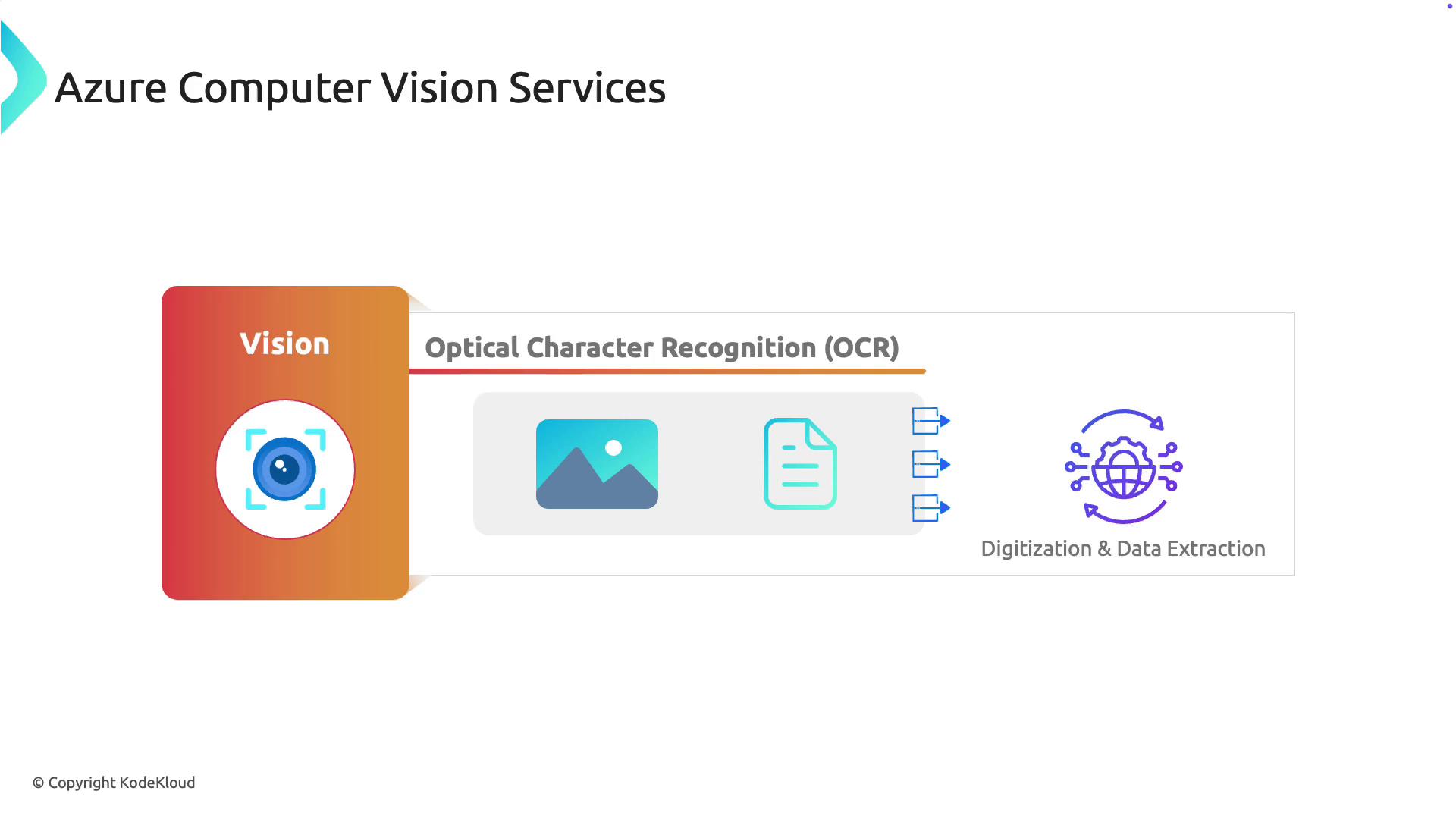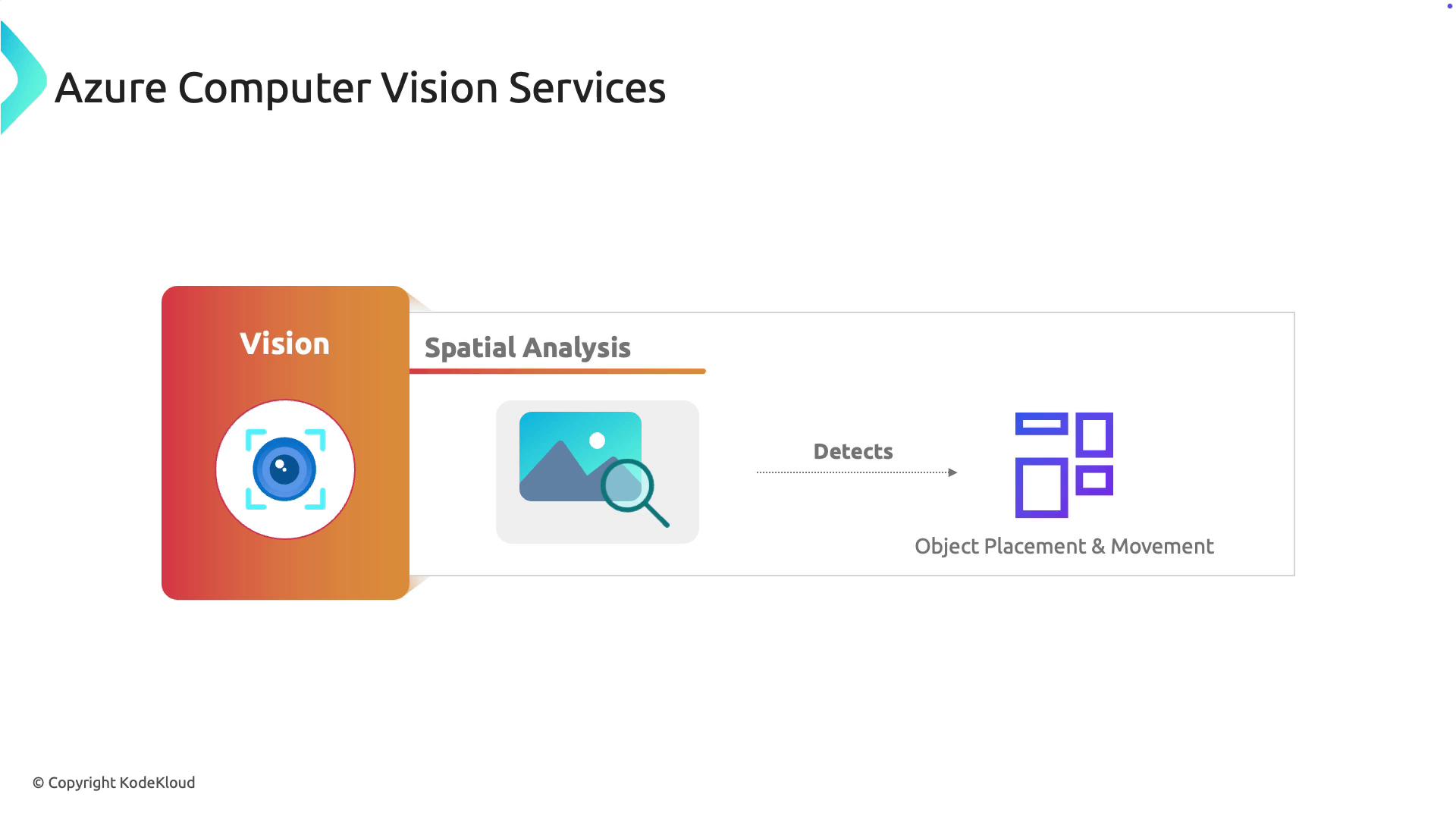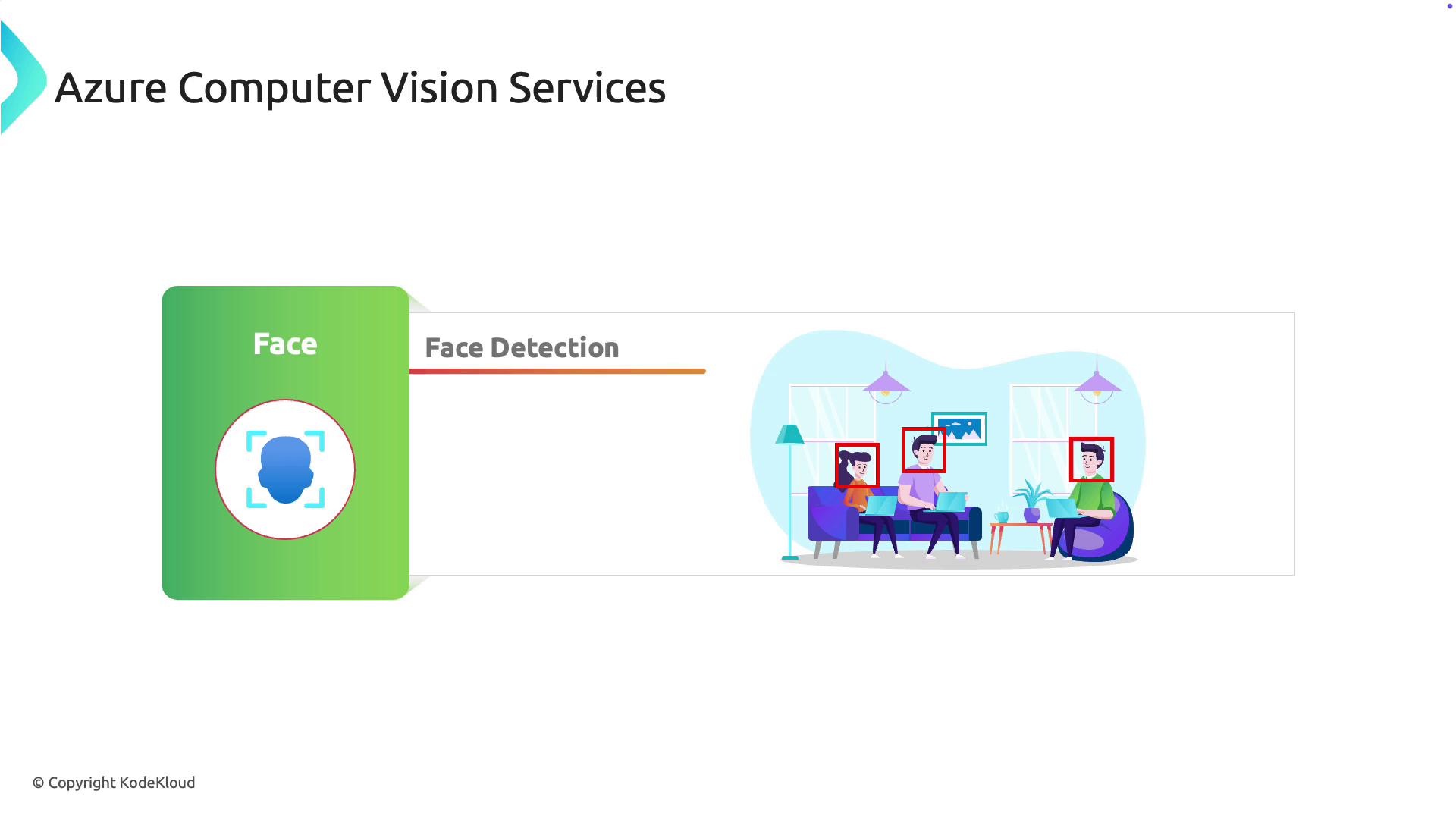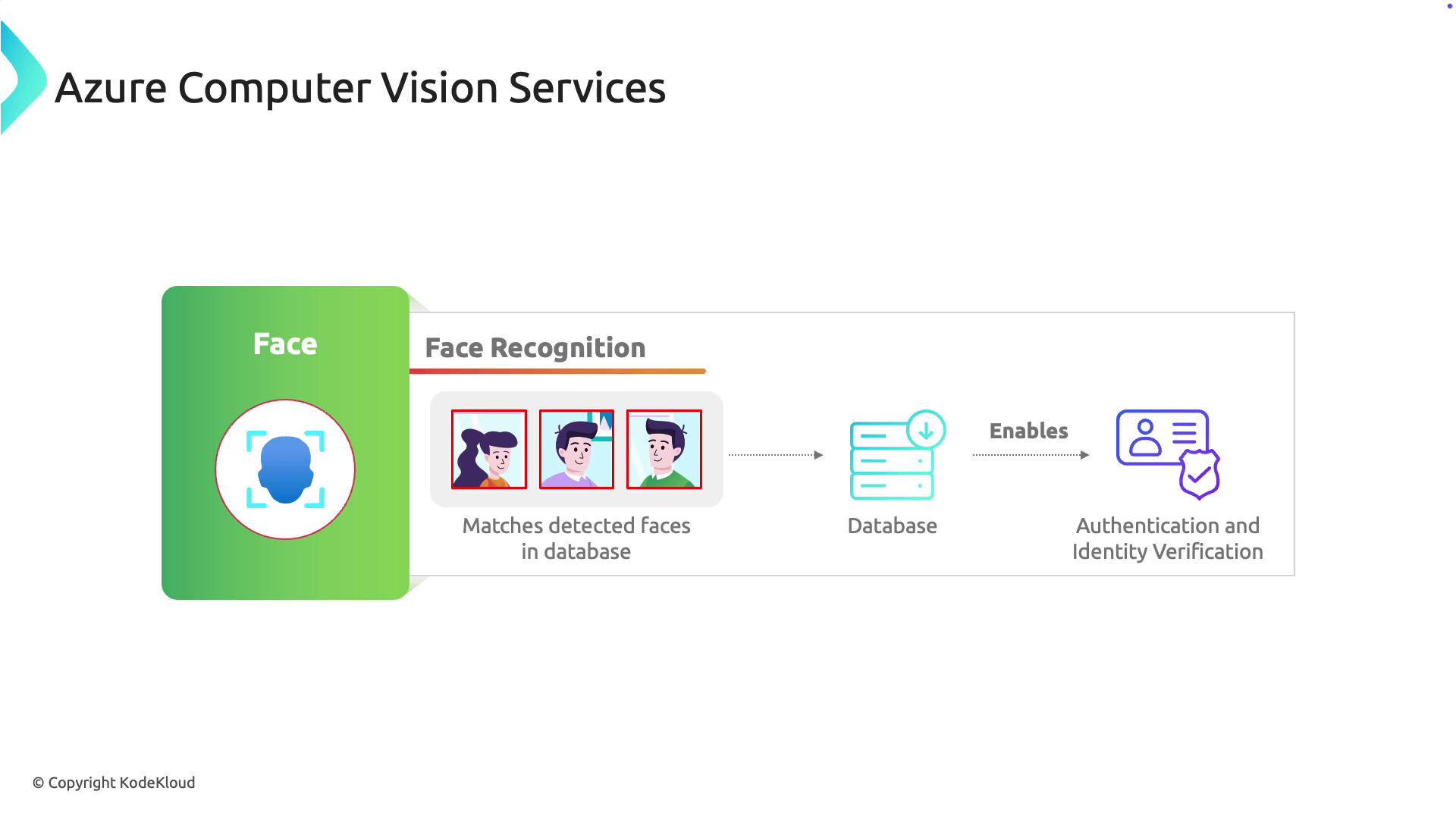AI-900: Microsoft Certified Azure AI Fundamentals
Concepts of Computer Vision
Azure Computer Vision Services
Azure Computer Vision Services provide a comprehensive suite of tools designed to enable applications to interpret and understand visual data. This guide covers the key features of these services, including image analysis, Optical Character Recognition (OCR), spatial analysis, face detection, and face recognition.
Vision Services
Image Analysis
Image Analysis enables the extraction of meaningful insights from images by detecting and labeling objects automatically. For example, when you upload a beach photo, the service can tag it with keywords like "beach," "sand," and "ocean." This automated tagging streamlines image organization and retrieval, making it an essential tool for media management.
In addition, Image Analysis can automatically generate captions. Imagine a social media platform that creates descriptions for each photo, enhancing accessibility for users with visual impairments and saving time during content curation. The service also supports model customization, allowing businesses to train the system to recognize industry-specific items. For instance, an agricultural company could customize the model to identify different crop types or farming tools.
Optical Character Recognition (OCR)
OCR technology extracts text from images or scanned documents, streamlining the digitization of physical records such as paper invoices or handwritten notes. By transforming printed or handwritten text into digital data, businesses can automate data entry processes, which simplifies storage, searching, and analysis.
Consider an insurance company that processes thousands of claim forms daily. Instead of manually entering data, the company can scan these forms and use OCR to directly extract text into a digital system. This automation not only reduces the manual workload but also minimizes data entry errors—a significant advantage for organizations managing large volumes of paper-based data.

Spatial Analysis
Spatial analysis extends the capabilities of image analysis by examining the spatial relationships within images. This feature helps determine the positioning of objects relative to each other and detects movement patterns.

In retail, spatial analysis can monitor customer flow by analyzing store layouts and movement patterns. This data allows retailers to optimize product placement for enhanced engagement and increased sales. In smart buildings, facility managers use spatial analysis to monitor occupancy levels, manage space more effectively, and adjust lighting or temperature in real time based on presence. Essentially, spatial analysis introduces an intelligent layer to environments, enabling dynamic responses to how people or objects are positioned and move.
Face Detection
Face detection is the process of identifying the presence and location of human faces within images, usually by drawing bounding boxes around each detected face. This functionality is essential for various applications that require awareness of individuals in a scene.

For example, in security systems, face detection can identify every face entering a camera’s view, enabling real-time tracking of individuals. This feature is also crucial in analyzing crowd density or foot traffic, thereby providing valuable insights into customer behavior and helping optimize staffing in public venues.
Face Recognition
Expanding upon face detection, face recognition not only identifies faces but also matches them with those stored in a database. This capability is vital for identity verification and secure authentication systems.

Think about how modern smartphones unlock using face recognition: the device detects a face, compares it with the stored image, and unlocks when a match is found. In business environments, face recognition can secure restricted areas by allowing access only to authorized personnel. It also enhances customer service by recognizing returning visitors, allowing for personalized interactions and tailored experiences.
Summary
Azure Computer Vision Services deliver an array of powerful tools to analyze and interpret visual data. From automated image tagging and caption generation to digitizing text, assessing spatial relationships, and recognizing faces, these services empower industries such as retail, security, healthcare, and beyond to enhance user experiences and optimize operational processes.
Explore Further
Now that you have a comprehensive understanding of Computer Vision Services, consider integrating these tools into your applications to transform your business processes. For additional insights, explore more about Azure AI Services.
Watch Video
Watch video content